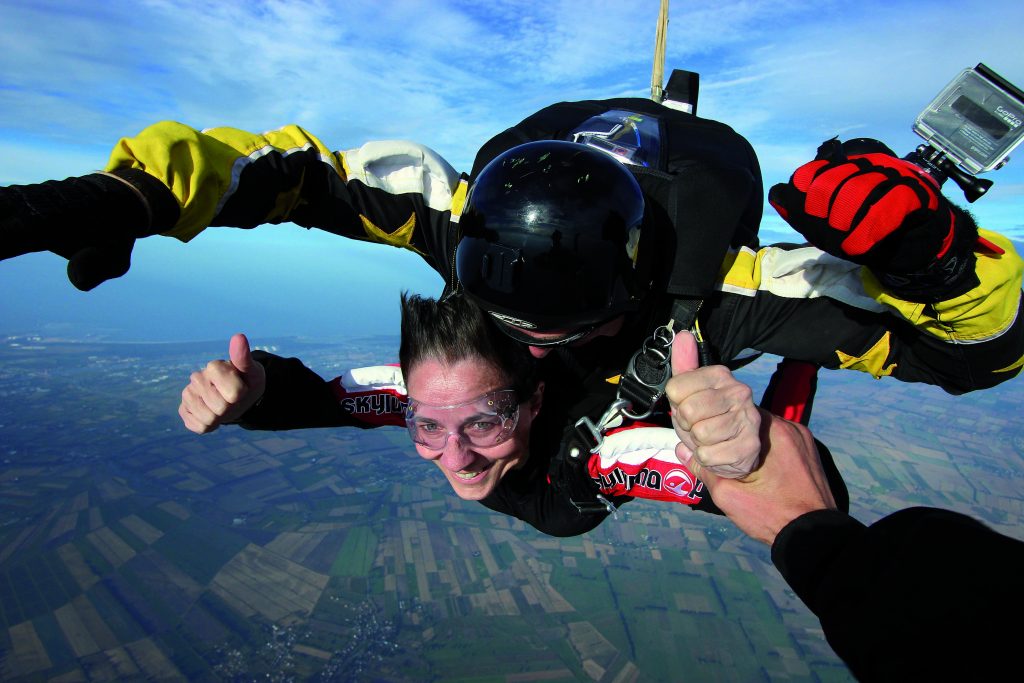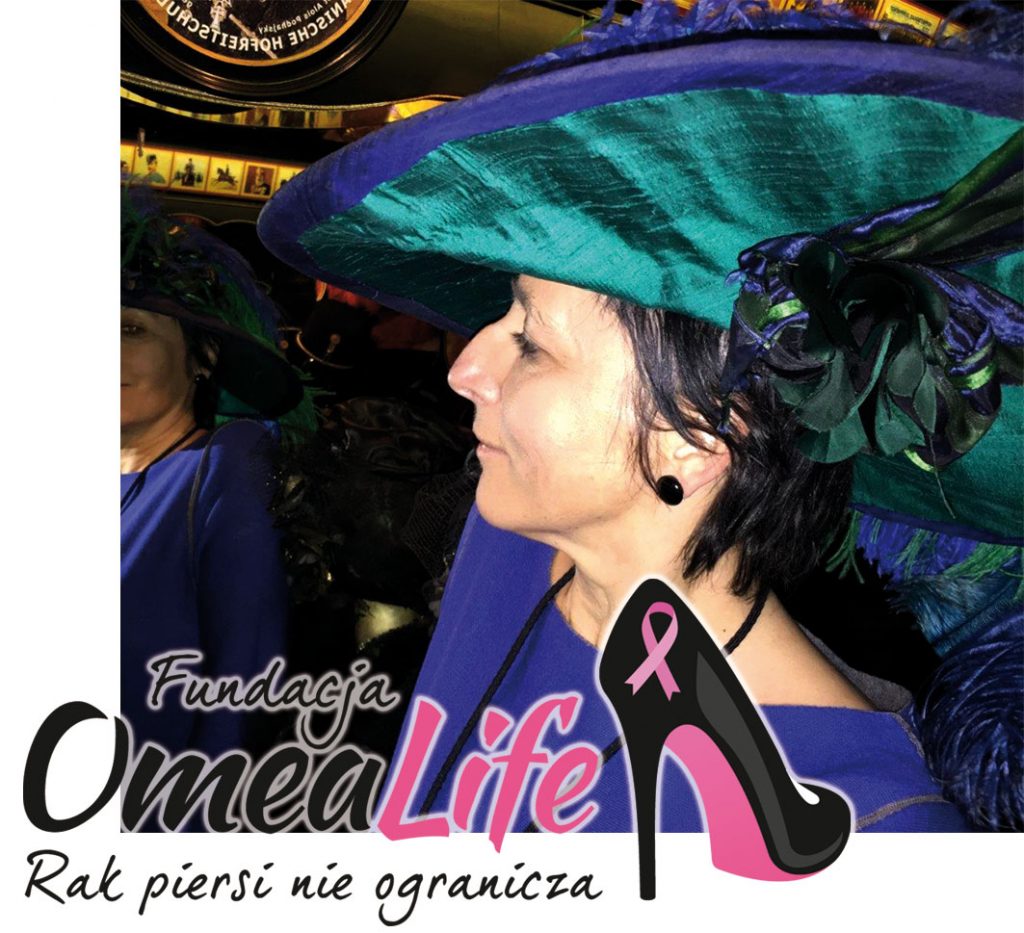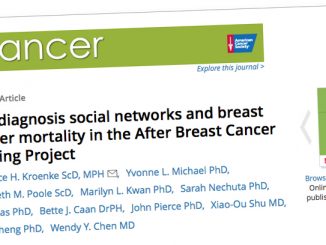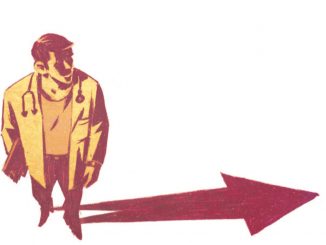How is it possible to help patients decide on the best treatment option for them, when they are scared, and when there is such uncertainty? Elżbieta Senkus, a specialist in breast and prostate cancers, talks to Anna Rouillard about her own approach and the urgent need to learn more about how the recommended treatments should best be used.
Good cancer care is about balancing the twin goals of preserving quantity and quality of life in line with the priorities and preferences of each patient. Great cancer care adds something extra, helping patients regain the confidence and drive to go out there and live their lives, whatever their prognosis. That is how four young Polish women treated by oncologist Elżbieta Senkus see things, anyway.
With Elżbieta’s help, they have just set up a foundation for young women with breast cancer, choosing as its logo a high-heeled shoe with a pink ribbon saying “breast cancer doesn’t limit you”. And at a recent meeting, says Elżbieta Senkus, “they thanked me for helping start their organisation, and for always being positive and wearing the highest heels around!”
The concept of minimally disruptive medicine
is at the core of Senkus’s philosophy for treating patients
with advanced breast cancer
Qualified in both medical and radiation oncology, Senkus is based at the Medical University of Gdansk on Poland’s Baltic coast, where she specialises in breast and prostate cancers. It’s a career path she decided on at a very young age, and doggedly pursued in the face of opposition from both parents: “When I was growing up, medicine was not considered a wise career choice for women in Poland,” she says.
It has certainly worked out well for Senkus, who has combined her career with bringing up two sons, now aged 19 and 22, and pursuing her love of travel and beautiful things – she has on occasion designed her own jewellery, and says interior design would have been her alternative career option.
As it is, she spends most of her time helping people with cancer get the most satisfaction and fulfilment out of their own lives, choosing to specialise in two cancers – breast and prostate – that offer her the opportunity to do what she does best.
“Both are hormone-driven diseases, are common, affect largely the ageing population, and progress over years rather than months. Being amenable for endocrine therapy, patients can tolerate treatment over long periods.”
“We tend to add new treatments on top of previous ones,
and I am sure we are overtreating many patients”
The lack of urgency, she explains, means she finds it a luxury to treat these patients – there is time to interact meaningfully to help them make the best treatment decisions for each person’s disease and lifestyle.
“Just this morning a lady in her seventies came in with early breast cancer, explaining she had decided on a mastectomy. Such radical treatment was simply not necessary in this case, and I explained that she would have just as good an outcome with breast conserving therapy,” said Senkus.
Part of the problem, she believes, is that patients are referred by surgeons who recommend that they do major surgery, “and because the patients are scared, they agree in order to be cured.” Once they’ve had the full range of options available presented to them, she adds, they often take a different path, and are relieved to have been informed about alternative solutions. “Talking to patients is absolutely crucial,” says Senkus. “It does take time, but I always try to have this time for patients.”
Indeed her patients are even invited to attend the discussion at the multidisciplinary team meeting, which Senkus sees as vital. “We see the patient in the MDT meeting at the beginning of their journey. This often makes the meetings very long, but it is so important to see the patient and not just the papers. You need to observe how she or he is behaving, and how fit they are. The first impression is very important.”

Talking about advanced disease
Having a conversation about the pros and cons of more gentle treatment options can be particularly difficult with patients whose cancers are no longer curable, says Senkus. “Patients know that metastatic breast cancer is a very serious disease, and they tend to presume that it needs to be treated aggressively. Aggressive treatment means ‘strong’ chemotherapy, and that means toxicity. But when we suggest an alternative option, one that is just as effective but offers a higher quality of life with fewer side effects, they are often unconvinced, and even question our competence as doctors!”
She cites as an example a patient who she had no doubt was an obvious candidate for treatment with endocrine therapy, which she accordingly recommended to the patient. But the patient wasn’t convinced, and sought a second opinion from another oncologist. The second oncologist offered chemotherapy, and Senkus’s patient agreed, “believing that a more aggressive treatment would be more effective.”
“Patients sometimes actually complain that I am not offering a strong and presumably effective enough treatment,” says Senkus, “And there begin the very long talks and explanations.”
“In spite of billions of dollars of research,
there have been no new predictive factors since
oestrogen receptors 30 years ago and HER2 20 years ago”
The concept of minimally disruptive medicine is at the core of Senkus’s philosophy for treating patients with advanced breast cancer. It seeks to minimise the burden of illness on the sufferer as well as the burden of treatment, which can become overwhelming for patients, and can affect their level of adherence.
“Quality and quantity of life are the main priorities in metastatic disease”, she says, adding that many oncologists overtreat with chemotherapy, partly due to the pressure that patients put on them to do so. “We have major challenges trying to persuade physicians, particularly community oncologists, to give less chemotherapy. I feel this is a bigger problem in my part of Europe than in western Europe.”
Preserving quality of life, she says, is about retaining as much normality as possible. “My goal in treating patients with metastatic disease is to enable them to lead relatively normal lives, and to do the same things they had done a year earlier. If they work, I tell them to continue working. Working means belonging to the normal, healthy population. Being on sick leave means moving to the ill population.”
In advanced disease, she adds, patients’ enjoyment of life, and their fulfilling of wishes, is more important than strict adherence to treatment. “If one of my patients wants to go away to visit her grandchild in another country, or go on a cruise, or take time out to fulfil a life-long aspiration, I encourage them to go, and to continue their treatment when they come back. I reassure them that nothing bad is going to happen to them.”
A ‘two-in-one’ oncologist
Senkus has an unusually broad perspective on cancer therapy, specialising as she does in both medical and radiation oncology. This is not a formal model but rather a tradition that is common at Gdansk Medical University, which offers medical graduates a unique opportunity to obtain full specialisation in both disciplines. Senkus is a product of this system and a strong proponent of the importance of multidisciplinary training for oncologists.
“Radiation oncology is very often a great mystery for medical oncologists, and this lack of understanding can lead to prejudices and even fear of it. On the other hand, radiation oncologists are technicians who are well versed in physics, but do not necessarily understand the biology of cancer very well. In Gdansk we had five to six years of radiation oncology specialisation, usually followed by a break of a few years, and then, as a practising radiation oncologist, a further five years of training in medical oncology. Having full competence in both medical oncology and radiation oncology, I really feel I can offer comprehensive care to my patients.”

There is also a practical advantage to being treated by a ‘two in one’ oncologist. “Precious time is saved, as I do not have to refer patients to other specialists for opinions or therapy. In a palliative setting, for example, if I have a patient with bone pain, I simply give him or her a shot of radiation the same day or the day after. The logistics of treatment are far simpler.”
Nowadays a lot of chemo-radiation is given simultaneously, for which knowledge of both modalities is very important, adds Senkus. “In rectal cancer, for example, where chemo-radiation is a typical indication, one person gives radiation therapy and another gives chemotherapy, but what happens when the patient has a complication that is a common complication of the area? Who is going to treat it? And who is to blame for it?”
Separating radiation and medical treatments is artificial, she argues. “The only way to treat a disease as complex as cancer is to combine knowledge on all the available treatments, and to specialise in organs, rather than in treatment modalities.”
“Five minutes” for triple negative breast cancer
Senkus has always sought to go beyond merely “combining knowledge” – as her research record shows, she is always looking for ways to develop new knowledge about the best treatment options for each of her patients.
Senkus has a theory that each cancer has its ‘five minutes’. “Renal cell cancer had its five minutes in 2005, prostate in 2010.” Most of the five minutes for breast cancer, she says, have been for HER2 positive tumours. This type of breast cancer has seen huge progress, she says, with trastuzumab, lapatinib, then pertuzumab and the antibody-drug conjugate T-DM1. “But now there’s not much of interest happening in HER2 positive disease.”
The spotlight is now on luminal disease, she feels, where combination with targeted treatments is becoming a new standard. “CDK4D inhibitors are a huge step forward – a number of trials show prolongation of progression-free survival with the first line of treatment in the range of ten months, and they also have a very good toxicity profile,” she says.
“What we really need,” she stresses, “is five minutes for triple negative breast cancer”. Triple negative breast cancer, the least common subset of breast cancer, is not a single disease but several separate diseases, each characterised by lack of receptors, not by any positive factor, and probably having a different biology. “Each of them also probably requires different treatments and for the time being the progress is limited to very narrow subgroups.”
Senkus argues that more research is needed into the use of current treatments, and not only novel treatments. “As with any single drug or treatment modality, there are always unanswered questions,” she says. “One of the directions in which systemic treatment is moving now is metronomic chemotherapy, where patients receive smaller doses at more regular intervals. We have data that some chemotherapies are more active, and better tolerated, when they are split into smaller doses. You can probably also give higher cumulative doses this way. But we are missing data on this approach for many diseases and many treatments.”
“The introduction of multidisciplinary teams
is a plus, but the quality criteria needed
to make them work properly are not yet there”
Even when a treatment exists, it is not necessarily evidence-based. She cites the example of docetaxel in prostate cancer, where a major trial has demonstrated that a bi-weekly dose of 50 mg/m2 is better tolerated, and also possibly slightly more active, than 75 mg/m2 every three weeks. “However, there are currently no data on its use in a hormone-sensitive setting. Thus we face a dilemma: being tempted to use this regimen, but at the same time being aware of how much is at stake if the approach proves not to be equally effective in this setting.
“In breast cancer we also lack data on replacing docetaxel, a rather unpleasant chemotherapy, by weekly paclitaxel, which is much better tolerated, but for which there are no data for many clinical situations. The problem is that this kind of trial will not attract industry funding.”
Questions about treatment de-escalation also need urgent answers, says Senkus. “We tend to add new treatments on top of previous ones, and I am sure we are overtreating many patients.” However, giving less treatment may be risky in an adjuvant setting, she adds, since you may be compromising long-term survival and cure. “Some research is being undertaken, but we need more trials that will demonstrate that we can avoid giving chemotherapy to patients where it can safely be spared or simply will not be effective. Predictive biomarkers are badly needed, she says. “In spite of billions of dollars being spent on research into new predictive factors, there have been no real new ones in breast cancer since oestrogen receptors 30 years ago and HER2 20 years ago. People are really trying. It’s a kind of holy grail of oncology.”
The issues are slightly different in metastatic disease, she adds, “where we are talking equally about outcome and quality of life and trade-offs.” Patient advocates have a particularly important role in helping define best practice in this setting, she says, and she points to the ABC (Advanced Breast Cancer) conferences as a great example of involving patient advocates as equal partners in drawing up consensus guidelines on treatment and care. Senkus has been involved with the ABC initiative from its earliest days, and will be co-chairing ABC4, which will take place in Lisbon in early November this year.
Closing the gap
At home in Poland, patient advocacy is in transition from an old-fashioned model to a more modern one. “Since breast cancer is a common disease, we do have patient advocates, and they are quite active, but not as active as in some other countries. I think the modern approach to patient advocacy is going to happen now and over the next few years.”
The four patients who set up the breast cancer foundation for young women are all aged between 30 and 35, and more traditional styles of advocacy were clearly not for them, says Senkus. “These are young, active, positive and energetic women. They have very positive messages for patients, and one of them told me that she went to church to thank God for her cancer, as the experience has changed her, and her life, for the better.”
“I hope the cancer will not be too high a price for this change of life,” she adds, “but for the time being I think her life has now indeed become more valuable, for her and for others.”
Like much of central and eastern Europe, Poland’s cancer services are still going through a period of transition in an effort to raise the quality of care and close the outcomes gaps with western countries.
The most recent EUROCARE study, looking at people diagnosed between 2000 and 2007, showed that the survival time for women diagnosed with breast cancer in Poland was around 10% lower than the European average. “So unfortunately it’s not doing very well,” says Senkus, “but hopefully it’s getting better.” There’s a lot of talk about breast units, and things are changing in that direction, she says, though few have yet been fully established and they still lack any legal or regulatory framework.
The country still has no cancer plan, she adds, or at least there is one, “a great document”, but it has never been approved by the government. Two years ago the government did introduce a cancer ‘package’, “but it’s a completely separate document… and actually it’s created probably much more noise than real effect.”
On the plus side, it has speeded up the diagnostic pathway, so new patients get their CTs done quickly. However, adds Senkus, nothing has been done for patients already on treatment, who may even wait longer for diagnostic tests, because patients coming through the new pathways get the “good places” on the waiting lists.
Another plus is the introduction of multidisciplinary teams, but the quality criteria needed to make them work properly are not yet there. “There is no volume requirement, which I think is a big disadvantage,” says Senkus, “because it can be that there is a surgeon, a medical oncologist and a radiation oncologist who basically have no experience with certain diseases, and they do an MDT meeting, and may only see five colorectal cancer cases a year, for example.”
“So there are some steps forward, but it’s not exactly in the right direction. Fortunately, improvements are planned, following monitoring of the system and identification of weak points over the past two years.”






An absolutny awesome article on the very best oncologist. I am lucky enough to be her patient. She heals our body and minds. I am a better person afer the illness. God bless you doctor Senkus!